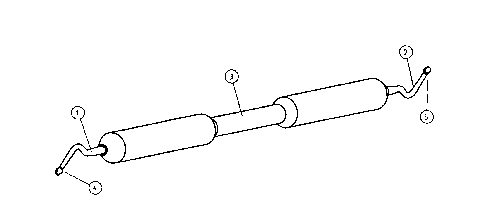Some of the information on this Web page has been provided by external sources. The Government of Canada is not responsible for the accuracy, reliability or currency of the information supplied by external sources. Users wishing to rely upon this information should consult directly with the source of the information. Content provided by external sources is not subject to official languages, privacy and accessibility requirements.
Any discrepancies in the text and image of the Claims and Abstract are due to differing posting times. Text of the Claims and Abstract are posted:
| (12) Patent Application: | (11) CA 2274824 |
|---|---|
| (54) English Title: | DENTAL INSTRUMENT |
| (54) French Title: | INSTRUMENT DENTAIRE |
| Status: | Deemed Abandoned and Beyond the Period of Reinstatement - Pending Response to Notice of Disregarded Communication |
| (51) International Patent Classification (IPC): |
|
|---|---|
| (72) Inventors : |
|
| (73) Owners : |
|
| (71) Applicants : |
|
| (74) Agent: | SMART & BIGGAR LP |
| (74) Associate agent: | |
| (45) Issued: | |
| (86) PCT Filing Date: | 1997-12-16 |
| (87) Open to Public Inspection: | 1998-07-09 |
| Availability of licence: | N/A |
| Dedicated to the Public: | N/A |
| (25) Language of filing: | English |
| Patent Cooperation Treaty (PCT): | Yes |
|---|---|
| (86) PCT Filing Number: | PCT/SE1997/002102 |
| (87) International Publication Number: | WO 1998029053 |
| (85) National Entry: | 1999-06-11 |
| (30) Application Priority Data: | ||||||
|---|---|---|---|---|---|---|
|
The invention relates to a dental instrument for removing carious dentine in
connection with chemical-mechanical treatment of caries by means of a caries-
dissolving solution applied to the caries for loosening the carious tissue.
The instrument comprises at least one non-rotating tool-head (4, 5) for
manually scraping away the loosened carious dental material. The tool head is
star-shaped with a number of scraping edges (6) having a curved outer contour
(periphery) for excavating loosened carious dental material in connection with
said treatment method. The scraping edges (6) are designed to scrape in
different directions, the bottom parts as well as the sides (peripheral parts)
of a tooth cavity. The open spaces (9) formed between the scraping edges (6)
admit transport by the instrument of drops of the solution used for the
chemical-mechanical treatment method up to the carious tooth site.
Cette invention concerne un instrument dentaire, lequel permet d'éliminer la dentine cariée lors du traitement chimique et mécanique de caries à l'aide d'une solution dissolvant ces dernières et que l'on applique afin de ramollir les tissus cariés. Cette instrument comprend au moins une tête d'outil non rotative (4, 5) qui permet de gratter et d'éliminer manuellement la matière dentaire cariée et ramollie. La tête de l'outil est en forme d'étoile et comprend plusieurs bords de grattage (6). Ces derniers possèdent un contour externe (périphérie) courbe qui permet d'excaver les matières dentaires cariés et ramollies lors dudit procédé de traitement. Les bords de grattage (6) vont gratter dans des directions différentes, tant sur les parties de fond que sur les côtés (parties périphériques) d'une cavité dentaire. Les espaces ouverts (9) qui séparent les bords de grattage (6) permettent à l'instrument d'acheminer jusqu'au site de la dent cariée des gouttes de la solution utilisée lors du traitement chimique et mécanique.
Note: Claims are shown in the official language in which they were submitted.
Note: Descriptions are shown in the official language in which they were submitted.

2024-08-01:As part of the Next Generation Patents (NGP) transition, the Canadian Patents Database (CPD) now contains a more detailed Event History, which replicates the Event Log of our new back-office solution.
Please note that "Inactive:" events refers to events no longer in use in our new back-office solution.
For a clearer understanding of the status of the application/patent presented on this page, the site Disclaimer , as well as the definitions for Patent , Event History , Maintenance Fee and Payment History should be consulted.
| Description | Date |
|---|---|
| Inactive: IPC from MCD | 2006-03-12 |
| Application Not Reinstated by Deadline | 2003-12-16 |
| Inactive: Dead - RFE never made | 2003-12-16 |
| Deemed Abandoned - Failure to Respond to Maintenance Fee Notice | 2003-12-16 |
| Inactive: Abandon-RFE+Late fee unpaid-Correspondence sent | 2002-12-16 |
| Inactive: Entity size changed | 2002-07-23 |
| Letter Sent | 1999-10-13 |
| Inactive: Single transfer | 1999-09-15 |
| Inactive: Cover page published | 1999-09-02 |
| Inactive: First IPC assigned | 1999-08-12 |
| Inactive: Notice - National entry - No RFE | 1999-07-21 |
| Inactive: Courtesy letter - Evidence | 1999-07-20 |
| Application Received - PCT | 1999-07-19 |
| Application Published (Open to Public Inspection) | 1998-07-09 |
| Abandonment Date | Reason | Reinstatement Date |
|---|---|---|
| 2003-12-16 |
The last payment was received on 2002-07-10
Note : If the full payment has not been received on or before the date indicated, a further fee may be required which may be one of the following
Please refer to the CIPO Patent Fees web page to see all current fee amounts.
| Fee Type | Anniversary Year | Due Date | Paid Date |
|---|---|---|---|
| Basic national fee - small | 1999-06-11 | ||
| MF (application, 2nd anniv.) - small | 02 | 1999-12-16 | 1999-09-13 |
| Registration of a document | 1999-09-15 | ||
| MF (application, 3rd anniv.) - small | 03 | 2000-12-18 | 2000-08-18 |
| MF (application, 4th anniv.) - small | 04 | 2001-12-17 | 2001-07-11 |
| MF (application, 5th anniv.) - standard | 05 | 2002-12-16 | 2002-07-10 |
Note: Records showing the ownership history in alphabetical order.
| Current Owners on Record |
|---|
| MEDITEAM DENTALUTVECKLING I GOTEBORG AB |
| Past Owners on Record |
|---|
| DAN ERICSON |
| ROLF BORNSTEIN |